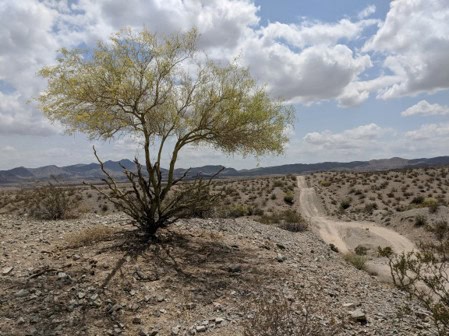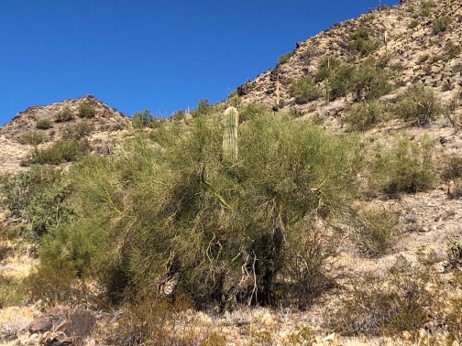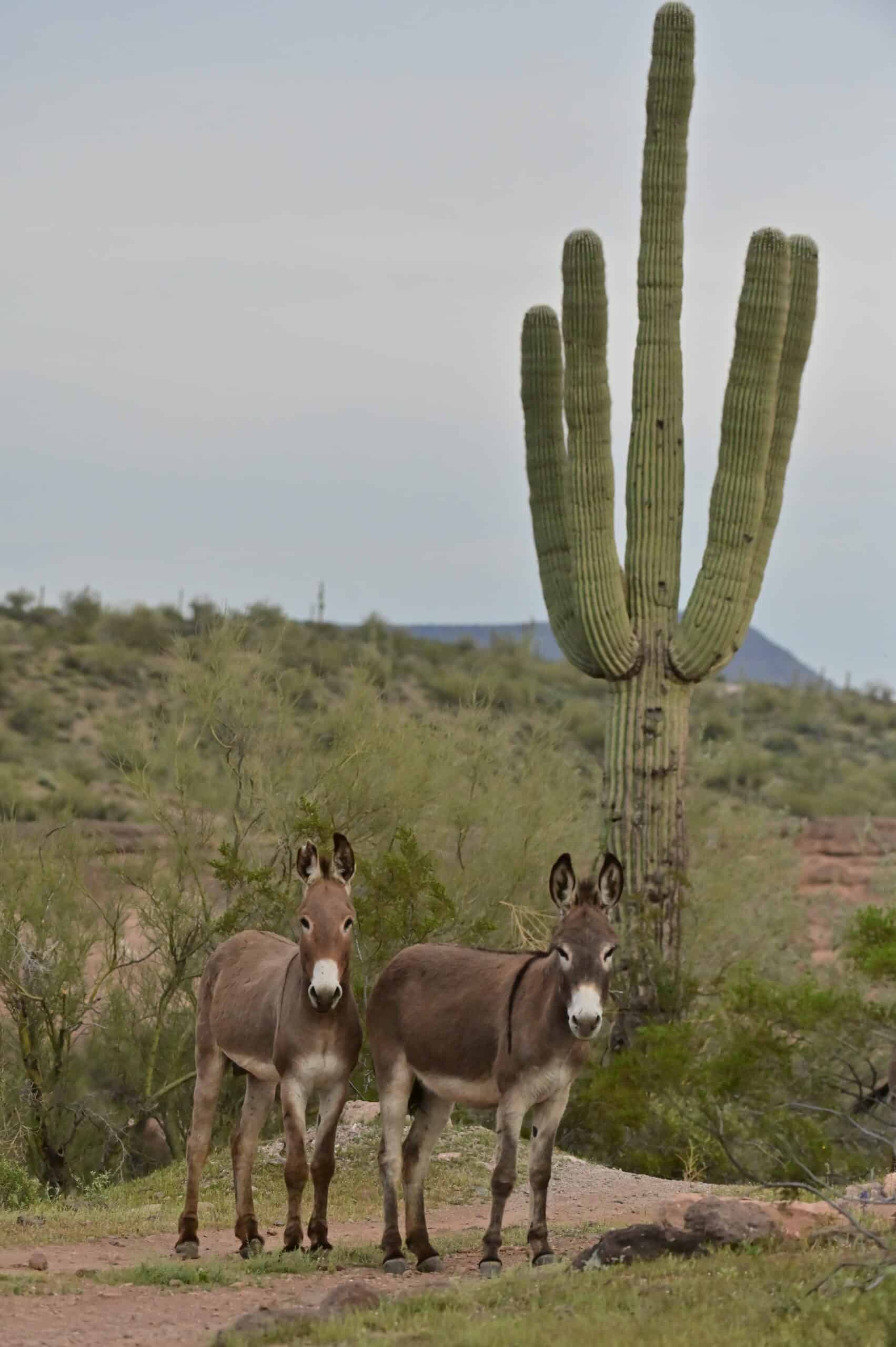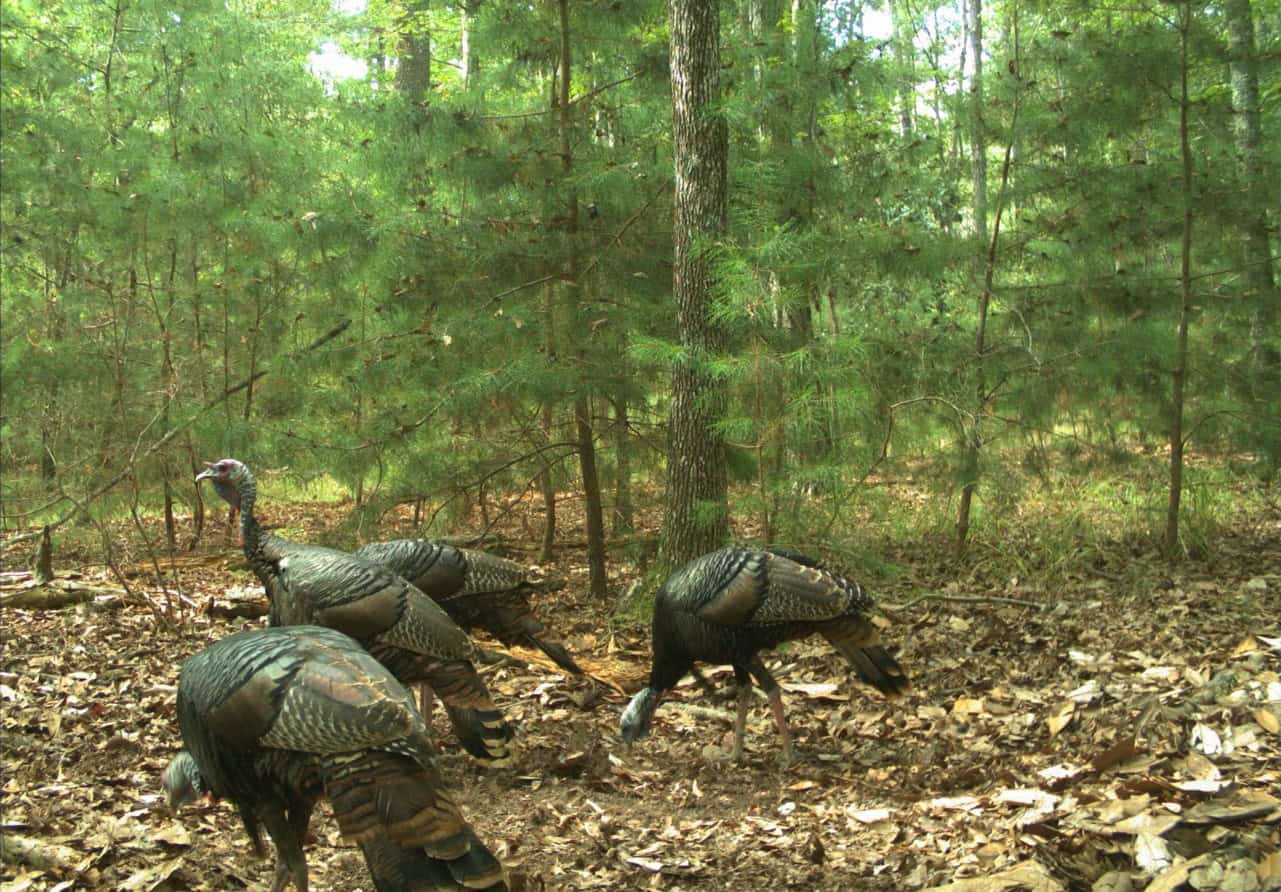Share this article
Wildlife Featured in this article
- Burro
- Merriam's kangaroo rat
- Bailey’s pocket mouse
- Desert pocket mouse
- Arizona woodrat
- Gilded flicker
- Red-tailed hawk
- Gila woodpecker
Resources Featured in this article
WM: Burros are changing desert ecosystems
Native plants and small mammals may be losing key habitat features due to grazing donkeys
The appetites of feral burros are changing the Sonoran Desert ecosystem, making it hard for small, native species to stay cool and find protection.
“We documented that the presence of burros was associated with key differences in Sonoran Desert plants that could have trickle-down effects,” said TWS member Esther Rubin, research branch chief at the Arizona Game and Fish Department.
The Wild and Free-Roaming Horses and Burros Act of 1971 protects feral burros (Equus asinus) and feral horses (E. caballus) on public lands. In the western U.S., both species cause a number of problems to native animals, and can outcompete other ungulates like bighorn sheep (Ovis canadensis). As a result, The Wildlife Society encourages the U.S. Bureau of Land Management to protect native species, which involves removing horses and burros from refuges and parks.
In a study published recently in Wildlife Monographs, Rubin and her colleagues looked at the ecosystem differences in parts of the Sonoran Desert of Arizona with and without donkeys.
“We have been observing growing numbers of burros in the state, and we could see impacts on the vegetation that had not been quantified,” Rubin said.
Life in the desert
From 2017 through 2019, the researchers collected data on native plants and small animal species in places with and without burros. They chose areas in and near so-called Herd Management Areas (HMAs), places where the U.S. Bureau of Land Management manages set numbers of burros, near Lake Havasu City in western Arizona and near Lake Pleasant in central Arizona.
In these areas, the team selected random plots to survey for vegetation. They also conducted count surveys for birds, reptiles, amphibians and small mammals. The team looked at species richness for plants, birds, reptiles and small mammals like Bailey’s pocket mouse (Chaetodipus baileyi), the desert pocket mouse (C. penicillatus) and the Arizona woodrat (Neotoma devia). They also looked at population density for some mammals and plants. They surveyed roughly 144 sites in total, half with and half without burros.
The researchers found that the size or density of several plant species was lower in areas with burros. In addition, these areas had lower ground cover and plant foliage density.

Protective plants
Yellow paloverde trees (Parkinsonia microphylla) were one of the affected species. In normal situations, without burros, the branches of these trees often stretch nearly down to the ground, creating a nicely shaded area. The low canopy of these trees essentially provides a microhabitat for younger and smaller plants to grow.
These larger trees, when their low canopy is intact, act as nurse plants by often protecting smaller plants as they first begin to grow, like the saguaro cactus—a species that grows slowly and can live more than a century.
Burros often camp out in the shade as well, which would be fine other than the fact that they bring their appetites. “In areas with burros, we often saw heavy browsing, and many trees didn’t have a leaf left in reach of a burro,” Rubin said. “Burros also rip off the bark of the trees.”
In areas with burros—and pruned paloverde trees—the researchers found a lower recruitment of saguaros. This is especially troubling due to the long time it takes these iconic cacti to grow, Rubin said. “It’ll be very slow to recover,” she said.

It isn’t just the cacti that are affected. Gila woodpeckers (Melanerpes uropygialis) and gilded flickers (Colaptes chrysoides) excavate nests in saguaros, while a host of other species will borrow these nests once the woodpeckers move out. Red-tailed hawks (Buteo jamaicensis) even nest on parts of the branches of the cacti.
Paloverde trees, when not pruned, also may provide protective effects to wildlife, though the researchers didn’t specifically study that. Small creatures may seek cover from potential predators and use the shade to cool down from the desert heat.
Small mammal abundance
The researchers also found other differences in the areas with burros. For example, close to water in areas with burros, there were lower densities of four small mammals: Bailey’s and desert pocket mice, Merriam’s kangaroo rat (Dipodomys merriami) and deer mice (Peromyscus spp.).
Arizona woodrat density was 68% lower in areas with burros, regardless of distance to water.
It’s important to track the impacts that burros are having on the Sonoran ecosystem as their numbers continue to grow, Rubin said. “The populations have been growing, and they are spilling way beyond those management areas,” she said, adding that numbers are sometimes higher outside these areas than inside them. In many Herd Management Areas, the number of burros exceeds the appropriate management levels established by the BLM.
As a result, she and her co-authors recommend the BLM manage the burros at least to the appropriate management levels they set themselves. Also, feral burros outside of designated HMAs need to be removed. In other cases, the set numbers may be too high. The drought that has recently affected many of these areas, for example, likely makes the carrying capacity for burros less than when these numbers were set during nondrought times. In these cases, appropriate management levels may need to be reevaluated.
While casual observers may not notice much change in the seemingly empty desert, a lot of species rely on a very specific balance of native species, Rubin said.
“It makes me concerned for the health of the Sonoran Desert,” she said.
Read The Wildlife Society’s position statement on feral horses and burros in North America.
This article features research that was published in the Wildlife Monographs, a TWS peer-reviewed, open-access journal. Join TWS now to access all TWS journals and read the latest in wildlife research.
Header Image: Burros are increasing in numbers in the Sonoran Desert in Arizona. Credit: Arizona Game and Fish Department








